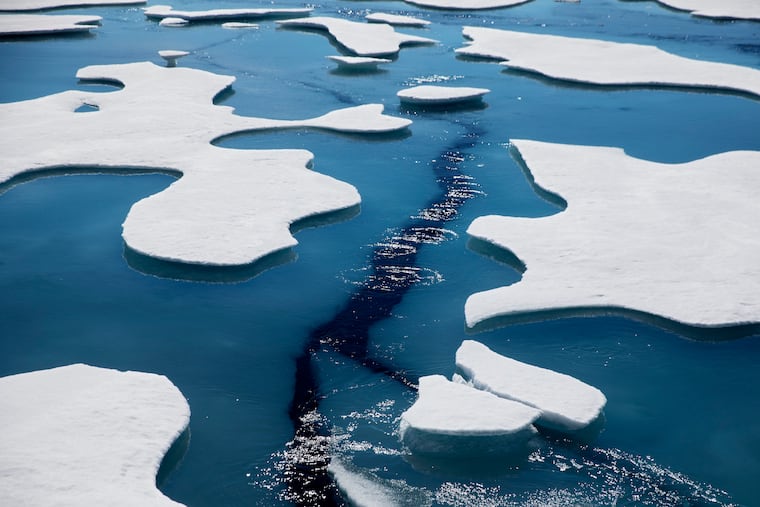Arctic sea-ice extent nears a record low, despite growth during a frigid winter
During a cold winter in the far north, ice extent grew robustly; then came summer.

Despite a growth spurt during quite a cold winter in the far north, Arctic sea ice has fallen to its second-lowest extent in 42 years of satellite observations, the National Snow and Ice Data Center reported Monday.
“The year 2020 will stand as an exclamation point on the downward trend in Arctic sea ice extent,” said Mark Serreze, the center’s director.
“I thought the sea ice would do well this summer because it had such a favorable winter,” said Judah Cohen, scientist and polar weather specialist with Atmospheric and Environmental Research. In winter sea ice had reached its highest extent since 2013.
» READ MORE: Snowless Philly winter evidently good for Arctic ice
The polar vortex swirled persistently up that way, confining the cold air and keeping it from spilling into Philadelphia and other parts of the nation.
But then came extreme summer warmth. “That June heat wave over Siberia moved into the central Arctic in July and just was a very efficient ice melter,” said Cohen. He said the melting also might have received a boost from a strong storm at the end of July.
The center, and the University of Colorado Boulder, said that the sea ice evidently had reached its minimum annual extent, 1.44 million square miles, on Sept. 15. The record minimum of 1.31 million square miles was set in 2012.
Meanwhile, at the other end of the world where winter ends on Tuesday, the Antarctic is experiencing one of its top 10 sea-ice extents, the center said.